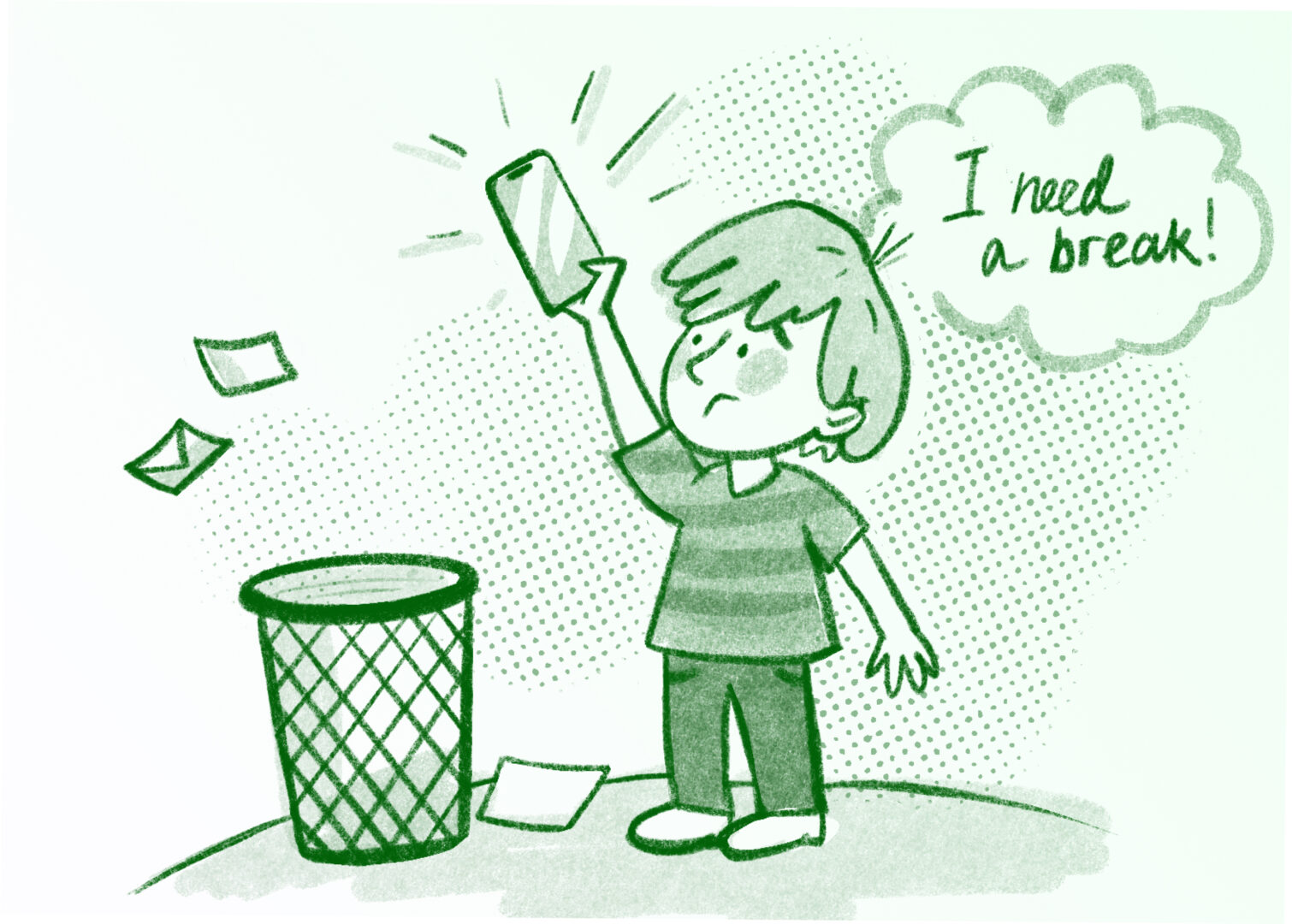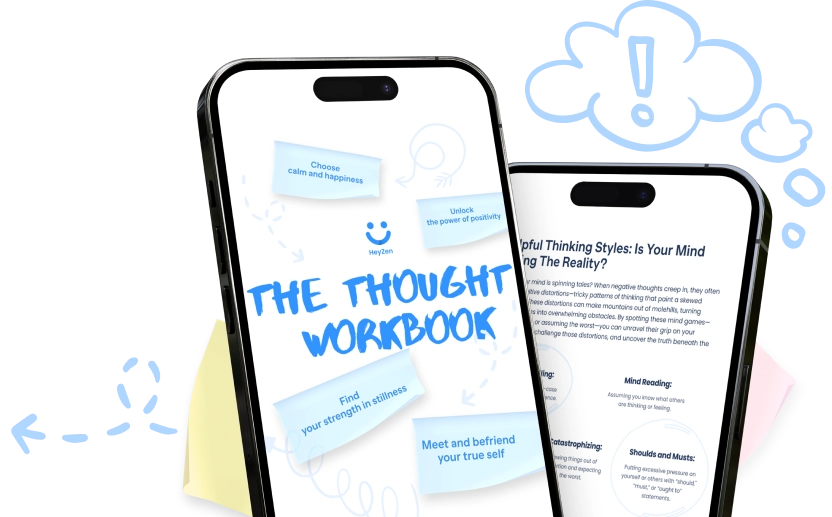How to Do Dopamine Detox the Healthy Way And Is It Really a Detox?

Easily accessible joys are everywhere: online shopping, video games, alcohol, and junk food—are all around us, and nothing, except ourselves, can stop us from using them. All these activities aren’t as evil as they may seem, and the main problem is our inability to curb impulses.
The latest social media trends may lead you to believe that a “dopamine detox” could be the answer to it. Indeed, you abstain from everything that can be addictive for a week, and voila! Your dopamine receptors are reset and ready to enjoy everything yet again. If only it worked this way! But dopamine isn’t a toxin; it’s just a chemical of the brain to understand better to live a more fulfilling life.
Let’s learn more about dopamine detoxes and how to make them really work for the sake of your mental health.
Key takeaways
- “Dopamine detox” or “dopamine fasting” are misleading names that do not presuppose total abstinence from all life’s joys and pleasures.
- Detox doesn’t reduce or boost dopamine, as it’s a neurotransmitter and a hormone produced by the brain in response to many conditions.
- Dopamine is involved in many other body functions, such as movement, motivation, learning, reproduction, etc. It doesn’t directly cause pleasure; other neurotransmitters and brain mechanisms play an important role too, so trying to “get rid of” dopamine alone doesn’t really make sense even if it was possible.
- Pleasurable activities like playing video games or social media do not necessarily lead to developing addiction. If used in moderation, they don’t cause problems with mental and physical health or disrupt normal well-being.
- An exercise from cognitive-behavioral psychology (CBT) lies behind the “dopamine detox” trend. CBT aims to develop the brain’s flexibility and reduce dependence on certain activities through conscious and thought-out limiting one’s engagement with this activity and replacing it with healthier habits.
- It’s advisable to understand the triggers (situations, emotions, people) that lead to problematic behaviors such as excessive gaming, doomscrolling, etc.
- Addictive and compulsive behavior can be a sign of other mental health conditions, so if they disrupt your normal functioning, consult a doctor to get professional help and understand the root causes of the problem.
The truth behind dopamine fasting
The idea behind “dopamine detox” isn’t new; it was taken from cognitive-behavioral therapy (CBT), which aimed to help a person self-regulate by choosing healthier activity over impulsive craving. The term “dopamine detox” was created by Cameron Sepah, and he himself warns people not to take it too literally.
The reason is that dopamine is a neurotransmitter (and also a hormone) produced by the brain. It also plays a role in body movements, motivation, learning, reproduction, and other important body functions. Moreover, it’s not the only chemical responsible for the feeling of pleasure. As shown by the study, the brain’s reward system is a complex mechanism, and it’s impacted by other “feel-good” hormones, e.g., norepinephrine, serotonin, etc. However, for some reason, we don’t try to fast from them too. So, with “dopamine detox”, it’s not only impossible to make a human brain stop producing only this neurotransmitter but also impossible to reduce or boost dopamine levels.
What’s true is that it is indeed the reward center that contributes significantly to addictive or compulsive behaviors, and it doesn’t differentiate between healthy and unhealthy pleasurable activities. As we’re exposed to certain unnatural stimuli like alcohol or social media, our reward center compels us to repeat the experience to feel the rise of “feel-good” chemicals again.
However, not every pleasurable activity will develop into addiction. An attempt to treat cocaine addiction via altering dopamine receptors didn’t show results, which only substantiates the idea that addiction development isn’t impacted only by dopamine but many other mechanisms are at play, such as genetics, childhood experiences, other mental health conditions, etc.
So, just as we learn to derive pleasure from social media and online shopping, we can learn to do the same with other activities. There is no scientific evidence that extreme measures like abstaining from every life pleasure make you a healthier or better person. The answer always lies in moderation and sensible usage of the immense happiness sources we’re presented with today.
How to “dopamine detox” the healthy way
A real CBT technique underpins the idea of a dopamine fast: consciously limiting your bad habits and building good habits while being totally aware of the existence of both.
Complete abstinence from those bad habits will only make them the sole focus of your attention, so limiting, setting boundaries, and understanding the root of problematic behaviors is what actually helps regain control over your mental well-being, according to CBT. So, try to follow these steps in your journey of building healthier habits:
Step 1. Identify unhealthy behaviors
A real CBT technique underpins the idea of a dopamine fast: consciously limiting your bad habits and building good habits while being totally aware of the existence of both.
Complete abstinence from those bad habits will only make them the sole focus of your attention, so limiting, setting boundaries, and understanding the root of problematic behaviors is what actually helps regain control over your mental well-being, according to CBT. So, try to follow these steps in your journey of building healthier habits:
Step 1. Identify unhealthy behaviors
First, create a list of unhealthy behaviors that you’d like to change. Cameron Sepah recommends using it for six compulsive behaviors:
- Pleasure or emotional eating,
- Internet or playing video games,
- Gambling or shopping,
- Porn or masturbation,
- Thrill or novelty-seeking behaviors,
- Recreational drug use.
So, if seemingly normal activities disrupt your normal lifestyle or cause distress, you should include them in the list and impose limits on engagement with them.
Remember to start with one habit and not overwhelm yourself with trying to manage all of them at once. Trying to change too much often leads to giving up, as it can be hard for the mind to adapt. Our brains are wired to favor familiar patterns and often resist change.
Once you’ve chosen one habit you’re ready to work on, set a certain time period during which you’ll experiment with your behavior and observe your feelings.
Step 2. Set boundaries
Once you’ve identified a habit you’re ready to change, establish healthy boundaries with it. Remember, you shouldn’t eliminate this activity from your life but only limit your exposure to it. Again, start small and introduce soft boundaries at first. For example, if your aim is limiting screen time, you can:
- Create “no-tech zones,” such as a bedroom and a dinner table, where you can’t use any gadgets.
- Set a time period for social media usage, for example, from 14:00 to 14:20 every day.
- Establish a rule of not using gadgets an hour before bed or an hour after waking up.
Once you train your brain to stick to a small rule, you can start adding other restrictions or work on changing other bothersome habits.
Step 3. Find healthy alternatives
Many healthy dopamine-producing activities can be practiced instead of undesirable ones. When you feel tempted to fall back into an old habit, try out the following:
Mindfulness techniques
Mindfulness is about focusing on the present moment, and there are many exercises to help you stay grounded in the “now.” For instance, you can try meditation by setting aside a few minutes each day to sit quietly and notice your physical and mental sensations. Guided meditations are also an option, where a narrator helps you observe your feelings, leading you to a calm and peaceful state.
You can also bring mindfulness into everyday activities like eating, exercising, or walking by paying attention to every sensation and feeling in the moment. For example, if you struggle with binge eating, you could try to:
- Notice how hunger shows up in your body and what sensations you experience before starting your meal.
- Truly feel the taste of every bite and eat slowly.
- Keep observing your feelings as you eat to recognize when you’re full and ready to stop.
- Observe how the feeling of fullness expresses itself in your body and how satisfying it feels.
By slowing down and focusing on the current thoughts, feelings, and sensations, you don’t let your brain carry you away to future or past worries. So, you may be less prone to impulsive behaviors that can harm your health.
Joyful hobbies
There are many reasons why people fall into addictive activities and overstimulate their brains, and one of them is a lack of a fulfilling life. Think about hobbies that you always wanted to pursue or seemed too weird to try—you never know where you will find your new source of healthy happiness and inspiration.
One of the solutions to get rid of addictive cravings is to create an environment that will facilitate a healthy lifestyle rather than a chase for instant gratification.
Social interactions
Spending time with your loved ones and like-minded people may reduce stress and foster a sense of belonging, especially for those struggling with compulsive behaviors. With them, you can divert your attention from your problems and concentrate on the joyful sides of life.
Step 4. Observe and stay aware
Throughout the whole process, create a journal to write down all the feelings and thoughts that arise. It’ll help you to identify unhealthy patterns and see the root problems of bothersome behavior.
Reflecting on your habits, ask yourself the following questions:
- What situations, people, or emotions made me drive me toward this compulsive activity?
- What feelings or thoughts arise when I avoid this activity?
- How do I feel immediately after engaging in this activity, and how do I feel hours later?
- What long-term impact does this habit have on my physical, mental, or emotional health?
- Am I using this activity to avoid something uncomfortable?
- How do I reward myself in meaningful, non-destructive ways?
Step 5. Determine your next steps
After the time you set for yourself at the beginning of this CBT exercise, evaluate how difficult it was for you to limit a certain behavior and if you’ve managed to find healthier alternatives to feel joy and happiness.
If it is too difficult to overcome certain activities, consult a mental health professional to find the root cause of the problem and get medical guidance toward a healthier and more fulfilling life.
Is “dopamine detox” good for mental health?
We all need time off from constant stimulation, but the real CBT-based technique isn’t about total abstinence from something but limiting and imposing healthy boundaries. This way, you are teaching your brain that there are other activities that may trigger dopamine production in your brain, and not only social media, online shopping, or gaming can bring you a sense of pleasure and joy.
Table of Contents
Resouces
- Amato L, Minozzi S, Pani PP, Solimini R, Vecchi S, Zuccaro P, Davoli M. Dopamine agonists for the treatment of cocaine dependence. Cochrane Database of Systematic Reviews 2011, Issue 12. Art. No.: CD003352. DOI: 10.1002/14651858.CD003352.pub3. Accessed 06 December 2024.
- Berridge KC, Kringelbach ML. Pleasure systems in the brain. Neuron. 2015 May 6;86(3):646-64. doi: 10.1016/j.neuron.2015.02.018. PMID: 25950633; PMCID: PMC4425246.
- Berridge KC, Robinson TE. What is the role of dopamine in reward: hedonic impact, reward learning, or incentive salience? Brain Res Rev. 1998;28:309–369. doi: 10.1016/s0165-0173(98)00019-8.









